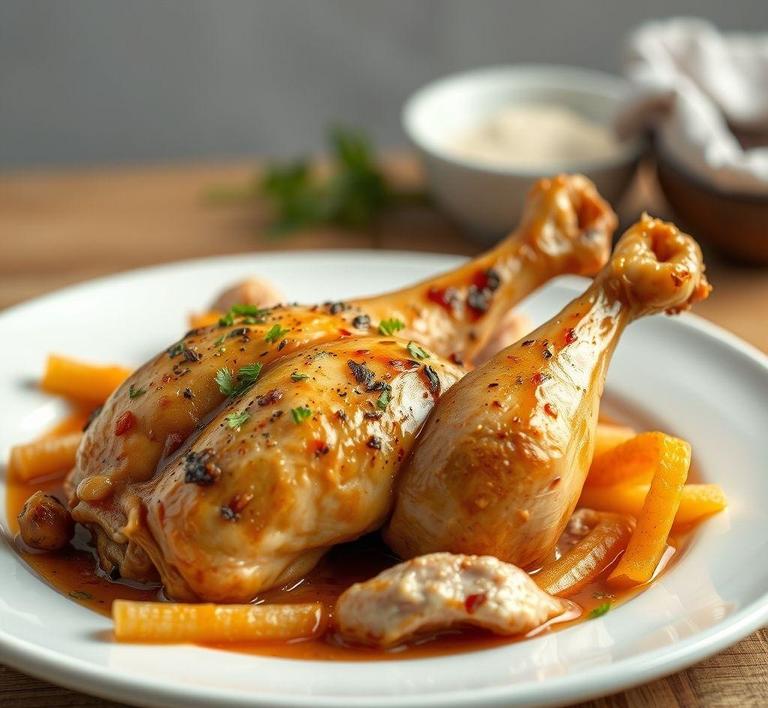So, you’ve cooked up some chicken, and now you’re wondering whether it’s okay to refreeze it? Well, you’re not alone! Refreezing cooked chicken is a topic that often comes with a bit of confusion, but don’t worry, we’ve got you covered. The process of refreezing cooked chicken involves a few important factors-like how it was cooked, how long it’s been stored, and whether it was properly cooled before being put back into the freezer. Understanding these aspects will help you keep your meals safe and tasty for later. Let’s dive into the details so you can confidently make the right decision about refreezing your cooked chicken without compromising its quality or safety.
Can You Refreeze Cooked Chicken?

The question of whether it’s safe to refreeze cooked chicken is a common one, particularly when you’re trying to avoid food waste or unsure whether you can store leftovers properly. The simple answer is yes, you can refreeze cooked chicken-but only under certain conditions. Refreezing food, especially meat, requires careful handling to maintain both its safety and quality.
When chicken is cooked and then frozen, it undergoes a series of transformations. First, the freezing process halts the growth of bacteria, essentially putting the food into a preservation state. However, once thawed, bacteria can start to multiply again, which is why the handling of thawed cooked chicken is crucial. The refreezing process can be safe if the chicken has been thawed properly, at a safe temperature, and has not been left out for an extended period (more than 2 hours at room temperature).
The key factor here is time and temperature. If cooked chicken has been thawed in the fridge (below 40°F or 4°C) and hasn’t been sitting out too long, it can be refrozen safely. If it has been thawed using quicker methods such as a microwave or hot water, it’s a different story. The chicken will need to be consumed or discarded quickly to avoid foodborne illnesses. In general, the chicken should not be refrozen if it’s been left at room temperature for longer than two hours.
How To Refreeze Cooked Chicken?
Refreezing cooked chicken can be done safely if you follow some important steps. Here’s a guide to ensure the process is carried out correctly, with minimal risk to food safety and flavor.
-
Cool the Chicken
First, it’s important to cool the cooked chicken as quickly as possible before storing it in the freezer. If you have leftovers, try to get the chicken to room temperature within two hours. For larger pieces, it may take longer, so it’s helpful to break them down into smaller portions. This ensures the chicken cools evenly and prevents bacterial growth.
-
Check the Condition of the Chicken
Before refreezing, evaluate the chicken’s condition. If it was thawed improperly, such as at room temperature for an extended period, it’s safer to discard it. Refreezing it could lead to the growth of harmful bacteria that might not be killed off during subsequent freezing or reheating.
-
Packaging
Packaging plays a big role in the quality of the refrozen chicken. To prevent freezer burn and preserve the chicken’s texture and flavor, you should wrap it tightly. Use heavy-duty aluminum foil, freezer-safe plastic bags, or airtight containers. Make sure there is as little air as possible inside the packaging to maintain freshness. For optimal storage, consider portioning the chicken into meal-sized servings to avoid having to thaw and refreeze it multiple times.
-
Label the Package
Label your package with the date the chicken was cooked and frozen. This will help you track how long it’s been in the freezer. Cooked chicken can last in the freezer for about 2-6 months for the best taste and texture, but it remains safe to eat beyond that timeframe if kept at a consistent freezing temperature.
-
Freezing
Place the properly wrapped chicken in the freezer, ensuring it’s on a flat surface to freeze evenly. If you’re freezing multiple pieces, avoid stacking them until they’ve solidified to prevent sticking together. Once frozen, you can stack them, but try not to overpack your freezer to maintain proper air circulation.
-
Thawing Before Eating
When you’re ready to use the refrozen chicken, always thaw it in the refrigerator rather than at room temperature. Slow, even thawing prevents the growth of bacteria that could have developed when the chicken was initially thawed. The chicken can also be reheated directly from the frozen state, but this may affect the texture.
Quality Impact
Refreezing cooked chicken can affect its texture and taste. Chicken is primarily composed of water, and when it’s frozen and thawed, the water inside the meat forms ice crystals. These ice crystals can rupture the chicken’s cells, leading to moisture loss during both the thawing and refreezing processes. As a result, refrozen cooked chicken tends to be drier and less juicy than freshly cooked chicken.
The texture of the chicken might also suffer, becoming a bit more rubbery or stringy depending on how long the chicken was cooked, frozen, and thawed. If the chicken was cooked at a high temperature, it’s more likely to retain some of its flavor and texture after being refrozen. However, slow-cooked or roasted chicken may suffer a more significant drop in quality.
In terms of flavor, while refrozen chicken remains safe to eat, its taste could be somewhat diminished. This is because the freezing process can alter the chemical compounds in the meat, leading to a less vibrant flavor profile. Freezer burn, which happens when chicken is exposed to air and moisture loss, can further compromise the flavor, making it taste stale or even slightly off.
Despite these quality impacts, refrozen cooked chicken is still generally safe to eat as long as proper food safety measures have been followed. It may not have the same "freshness" as the first time it was cooked, but it’s still a viable option for quick meals or soups where the texture and flavor can be less of a concern.
Refreezing cooked chicken is safe, but only if certain guidelines are followed. Always ensure that the chicken was properly thawed and has not been left at room temperature for too long. Once cooled and packaged securely, you can refreeze cooked chicken without significant safety concerns, as long as the chicken hasn’t been exposed to prolonged warmth.
However, the process of refreezing cooked chicken will likely affect its quality. The chicken may become drier, less juicy, and its flavor might be muted compared to freshly cooked chicken. Freezer burn is another concern, especially if the chicken was not well-wrapped, and it can result in a noticeable decline in taste.
In the end, refreezing cooked chicken is a convenient way to extend the life of your leftovers, but it’s important to weigh convenience against quality. If you’re looking for a perfect texture and flavor, it’s always better to consume cooked chicken within a few days of its initial cooking, but if you’re willing to accept a slight drop in quality for the sake of avoiding waste, then refreezing is a viable option.
Is It Safe To Refreeze Cooked Chicken?
Refreezing cooked chicken is a practice that many people question, especially when it comes to food safety. The good news is that, in general, cooked chicken can be refrozen, but there are some important considerations to keep in mind to ensure it remains safe to eat. The safety of refreezing chicken depends on several factors, including how the chicken was initially frozen and thawed, how long it’s been stored, and how well it’s been handled throughout the process.
When you cook chicken, the proteins and moisture in the meat change in ways that make it more susceptible to bacterial growth during the thawing process. If chicken is thawed in the fridge or by using a microwave, and if it hasn’t been sitting at room temperature for long periods, refreezing is typically safe. However, refreezing chicken that has been thawed at room temperature or left out for extended periods can increase the risk of foodborne illnesses, as harmful bacteria like Salmonella and Campylobacter can multiply quickly at temperatures above 40°F (4°C).
To refreeze chicken safely, you must follow a few key guidelines:
- Thawing Method: Thaw the chicken in the refrigerator, microwave, or by cold water immersion to avoid prolonged exposure to warm temperatures.
- Time Frame: Do not refreeze cooked chicken that has been sitting at room temperature for more than 2 hours.
- Storage Conditions: Once thawed, the chicken should be used within 3-4 days if kept refrigerated at 40°F (4°C). Any longer, and the quality and safety will diminish.
Essentially, while refreezing cooked chicken is safe as long as the proper precautions are followed, it’s important to balance food safety with the potential loss of flavor and texture that comes with multiple freeze-thaw cycles.
Signs That Cooked Chicken Should Not Be Refrozen
Knowing when not to refreeze cooked chicken is just as important as knowing how to do it safely. If you notice any of the following signs, it’s best to discard the chicken rather than attempt to refreeze it:
- Foul Odor: A strong, unpleasant odor is one of the first indicators that chicken has gone bad. Even if it was properly cooked and stored, if it has an off or sour smell after being thawed, it’s no longer safe to eat, let alone refreeze.
- Slimy or Sticky Texture: If the surface of the chicken feels slimy or sticky to the touch, this is a sign of bacterial growth. The slime is typically caused by spoilage bacteria, and it’s a clear indicator that the meat should not be refrozen or consumed.
- Discoloration: Cooked chicken should have a pale golden-brown or white color. If the meat turns gray or shows signs of greenish hues, it may be an indication that spoilage bacteria have started to grow, and the chicken should be discarded.
- Extended Storage Time: If the chicken has been sitting in the fridge for longer than the recommended 3-4 days after being cooked, it should not be refrozen. Even if it looks fine, bacteria may have had time to multiply, increasing the risk of foodborne illness.
- Improper Thawing: If the chicken was thawed improperly, for example, left out at room temperature for hours or thawed in hot water, it could be harboring bacteria that make it unsafe to refreeze. The “danger zone” (40°F-140°F) is where bacteria grow most rapidly, and thawing chicken in that zone makes it dangerous to consume or refreeze.
Common Refreezing Mistakes
Refreezing cooked chicken is something many people do without thinking about the details, and that can lead to potential mistakes that impact both safety and quality. Some of the most common mistakes include:
- Thawing on the Counter: One of the biggest mistakes is thawing cooked chicken at room temperature. This can allow bacteria to grow quickly. Even if the chicken seems fine, leaving it out for more than a couple of hours could be dangerous. Always thaw chicken in the refrigerator or use cold water or the microwave to speed up the process.
- Not Sealing Properly: Another mistake is not properly sealing the chicken when preparing to refreeze it. Freezing air can cause freezer burn, which impacts both the texture and flavor of the meat. It’s essential to wrap the chicken tightly in plastic wrap or aluminum foil and then place it in an airtight container or freezer bag to prevent freezer burn.
- Refreezing Multiple Times: Refreezing chicken multiple times is not advisable, as each cycle of thawing and freezing can degrade the texture and flavor of the meat. Additionally, each time the chicken is thawed, there is a higher risk of bacterial contamination if it isn’t handled properly.
- Refreezing After Long Storage: Refreezing chicken that has been stored in the fridge for a long time-especially beyond 3-4 days-could allow harmful bacteria to multiply and thrive. It’s critical to pay attention to how long cooked chicken has been stored before considering it for refreezing.
- Freezing While Hot: Another mistake people make is trying to freeze chicken while it’s still hot. Placing hot chicken directly in the freezer can raise the temperature inside the freezer, potentially affecting the safety of other foods. Always let cooked chicken cool to room temperature before freezing.
Tips And Tricks
To maximize both the safety and quality of cooked chicken when refreezing, here are some helpful tips and tricks to follow:
- Cool It Quickly: After cooking the chicken, ensure it’s cooled down quickly before placing it in the freezer. You can speed up the cooling process by cutting the chicken into smaller pieces, which reduces the time it takes to cool.
- Use Proper Packaging: Invest in good-quality freezer bags or vacuum-seal bags to store your chicken. Make sure to remove as much air as possible to prevent freezer burn. If using plastic wrap or foil, ensure the chicken is tightly wrapped, with no gaps where air can get in.
- Label Everything: Always label the bags or containers with the date when you froze the chicken. This will help you keep track of how long the chicken has been stored, which is essential for ensuring it’s used within a safe time frame.
- Use Within 4 Months: For the best quality, use refrozen chicken within 4 months. While it’s safe to eat beyond that time frame, the texture and flavor will deteriorate over time, leading to a less enjoyable eating experience.
- Consider Portioning Before Freezing: If you typically have leftovers, consider portioning out your cooked chicken into smaller amounts before freezing. This way, you only need to thaw the portion you plan to eat, reducing the chances of refreezing it multiple times.
- Avoid Refreezing Once Thawed: Once you thaw cooked chicken, avoid refreezing it unless absolutely necessary. Refreezing chicken that has already been thawed can lead to a significant decline in taste and texture, making it less appetizing.
Conclusion
In conclusion, while refreezing cooked chicken is generally safe, it comes with important caveats. Proper thawing methods, careful handling, and attention to time and storage conditions are key to ensuring the meat stays both safe and delicious. Always trust your senses-if the chicken looks, smells, or feels off, it’s better to discard it than risk foodborne illness. By avoiding common mistakes, using proper packaging, and following safety guidelines, you can extend the shelf life of your cooked chicken without compromising its quality. With these tips, you can confidently refreeze your cooked chicken and enjoy it in future meals with minimal risk.


